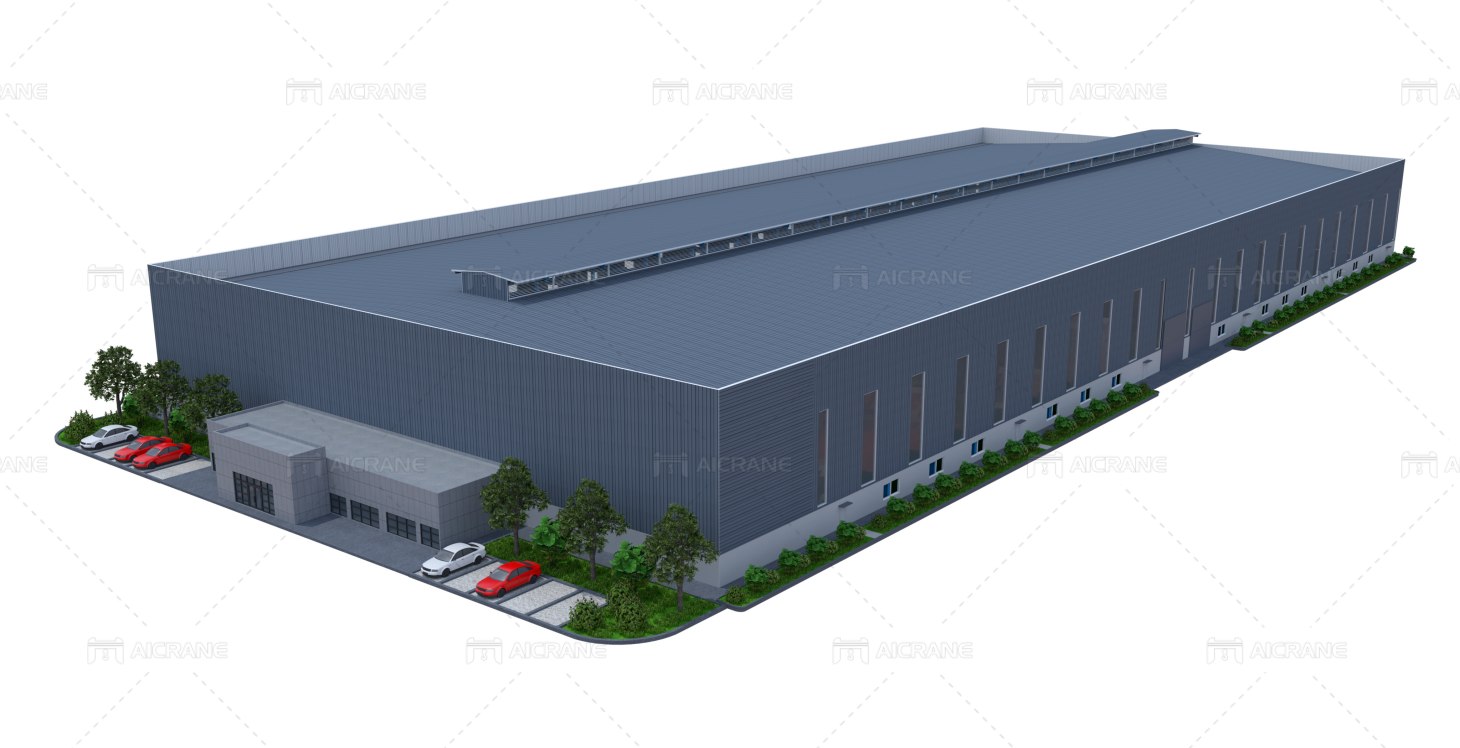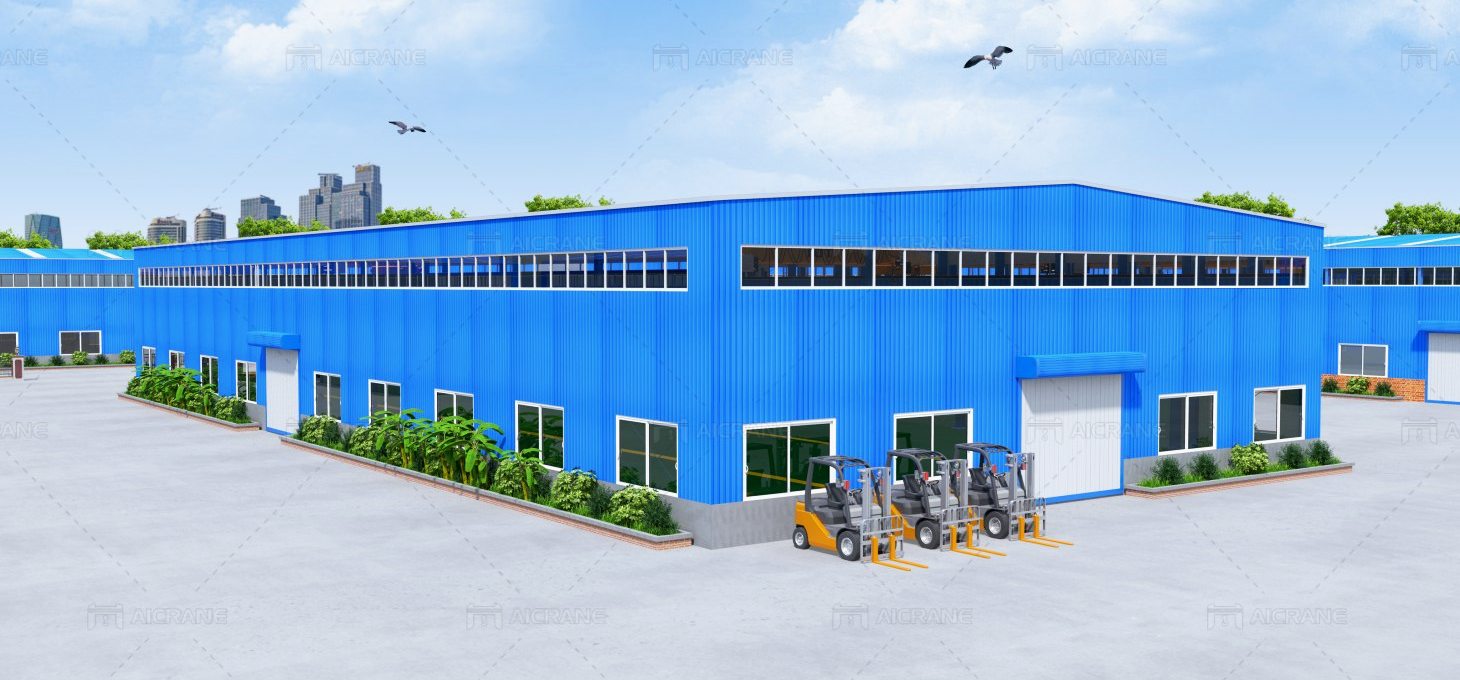Planning and constructing a steel structure factory is a comprehensive endeavor that requires careful consideration of various factors to ensure efficiency, safety, and functionality. Steel structures have become increasingly popular in industrial settings due to their durability, flexibility in design, sustainability benefits, and cost-effectiveness. This article provides a detailed guide on the essential steps involved in turning your conceptual vision of a steel structure factory into a tangible reality.

Understanding the Advantages of Steel Structure Factories
Steel is renowned for its structural strength, which makes it an ideal material for industrial construction projects:
- Durability: Steel structures are highly durable and resistant to environmental factors such as corrosion, fire, and pests, ensuring long-term reliability and minimal maintenance requirements.
- Flexibility in Design: Steel’s high strength-to-weight ratio allows for large clear-span spaces without the need for internal columns. This flexibility enables efficient layout designs that cater to specific production processes and operational needs.
- Sustainability: Steel is a sustainable building material as it is recyclable and can be fabricated off-site, minimizing construction waste. It supports energy-efficient building designs and can contribute to green building certifications.
- Cost-Effectiveness: The speed of construction associated with steel frame structures, along with reduced labor costs and material waste, often results in overall project cost savings compared to traditional construction methods.
Essential Steps in Planning a Steel Structure Factory
1. Concept Development
Before diving into the detailed planning stages, it’s essential to establish a clear vision and feasibility of the project:
- Feasibility Study: Conduct a thorough feasibility study to assess the site, environmental impact, zoning regulations, accessibility for transportation and utilities, and economic viability of the project.
- Functional Requirements: Define the factory’s operational needs, including production processes, workflow, space requirements, and future expansion plans. Consider integrating advanced technologies for automation and process optimization.
2. Design Phase
The design phase involves collaboration between architects, engineers, and stakeholders to create a comprehensive blueprint for the steel structure factory:
- Architectural Design: Develop a functional layout that maximizes space utilization, workflow efficiency, and employee safety. Consider factors such as building orientation, natural lighting, and ergonomic workspaces.
- Structural Engineering: Ensure structural integrity by designing steel frames, roof trusses, and foundation systems that comply with local building codes and safety standards. Conduct structural analysis to optimize material use and minimize construction risks. Steel structures can be designed to be different styles to match different requirements. Aicrane steel structure features high quality and long lifespan, and you can know more about it by searching the keywords on internet.

3. Regulatory Compliance
Navigating regulatory requirements and obtaining necessary approvals are critical steps in the planning process:
- Permitting and Approvals: Obtain building permits, environmental clearances, and other regulatory approvals from local authorities. Ensure compliance with building codes, fire safety regulations, environmental laws, and occupational health standards.
- Health and Safety: Develop a comprehensive health and safety plan that addresses construction site hazards, emergency procedures, worker training, and ongoing safety monitoring throughout the project lifecycle.
4. Technological Integration
Incorporating advanced technologies can enhance operational efficiency, sustainability, and maintenance of the steel structure factory:
- Building Information Modeling (BIM): Utilize BIM software to create a digital representation of the factory design, facilitating collaboration, clash detection, and design optimization. BIM enables stakeholders to visualize the project and make informed decisions before construction begins.
- Automation and IoT: Integrate automation systems and Internet of Things (IoT) devices to monitor production processes, optimize energy usage, and improve asset management. IoT sensors can provide real-time data on equipment performance, maintenance needs, and environmental conditions.
5. Construction and Implementation
Effective project management and construction practices are essential for timely and successful completion of the steel structure factory:
- Contractor Selection: Choose experienced contractors and suppliers with a proven track record in steel structure construction. Ensure they adhere to quality standards, safety protocols, and project timelines.
- Construction Management: Implement a structured project management approach to oversee construction activities, monitor progress, and address any issues promptly. Regular site inspections and quality control checks are essential to maintain construction quality and safety.
6. Testing and Commissioning
Before commissioning the steel structure factory for full-scale operations, thorough testing and commissioning activities are necessary:
- Quality Assurance: Conduct comprehensive inspections and performance tests on structural components, mechanical systems, and safety features. Ensure all installations meet design specifications and regulatory requirements.
- Operational Readiness: Prepare for factory operations by training personnel on equipment usage, maintenance procedures, and safety protocols. Develop contingency plans for potential disruptions and establish protocols for ongoing maintenance and facility management.
Real-World Applications and Case Studies
Steel structure factories have diverse applications across industries such as manufacturing, automotive, food processing, and pharmaceuticals:
- Manufacturing: Provide efficient production environments for assembling and manufacturing products with flexible layout designs and integrated technology solutions.
- Warehousing: Facilitate storage and logistics operations with high-clearance spaces and customizable storage solutions for inventory management.
- Specialized Industries: Support specialized production processes with custom-designed facilities that meet unique operational requirements and regulatory standards.
Planning and building a steel structure factory requires a systematic approach that encompasses conceptualization, design, regulatory compliance, technological integration, construction management, and operational readiness. By following these essential steps and leveraging the advantages of steel as a building material, businesses can create a state-of-the-art facility that enhances productivity, supports sustainable practices, and contributes to long-term operational success. Steel structure factories not only provide durability and flexibility but also position industries for growth and innovation in a competitive global market. As industries evolve, the strategic importance of steel structures in shaping modern industrial environments continues to expand, driving advancements in construction practices and operational efficiency.